
I missed a shot which is unusual for me typically. I'm not saying I don't ever miss, just that when I do I generally know why immediately; shooting for as long as I have one gets a feeling when something hasn't gone right. Shooter error happens and, of course, with so many elements needing to happen all at once failure to impact a target occurs. So, my miss the other day triggered a process of elimination considering I felt that I'd done everything right. Something was wrong though, but what?
In a situation like this the shooter needs to eliminate possible reasons for missing with the view to understanding what the cause actually was then rectifying it. I thought about what I'd personally done, worked through the process of taking the shot, the breathing, trigger-pull, how I was holding the rifle when the shot broke (fired) and other such factors. Did I do something wrong? I couldn't find an issue, so eliminated operator-error.
My ammunition is precise, I hand-load it personally and each goes through a stringent process of quality assurance. The rifle is in good condition, cared for and maintained meticulously and the scope is one of the best money can buy. The scope...Hmm, after eliminating the other factors I was left with thoughts on the scope. Despite being a very good quality scope it's still susceptible to being damaged or knocked which could potentially affect its zero.
It's the only thing I could think of so I'd need to test it, which is what I did today. But first, a word on the importance of zeroing a rifle scope.
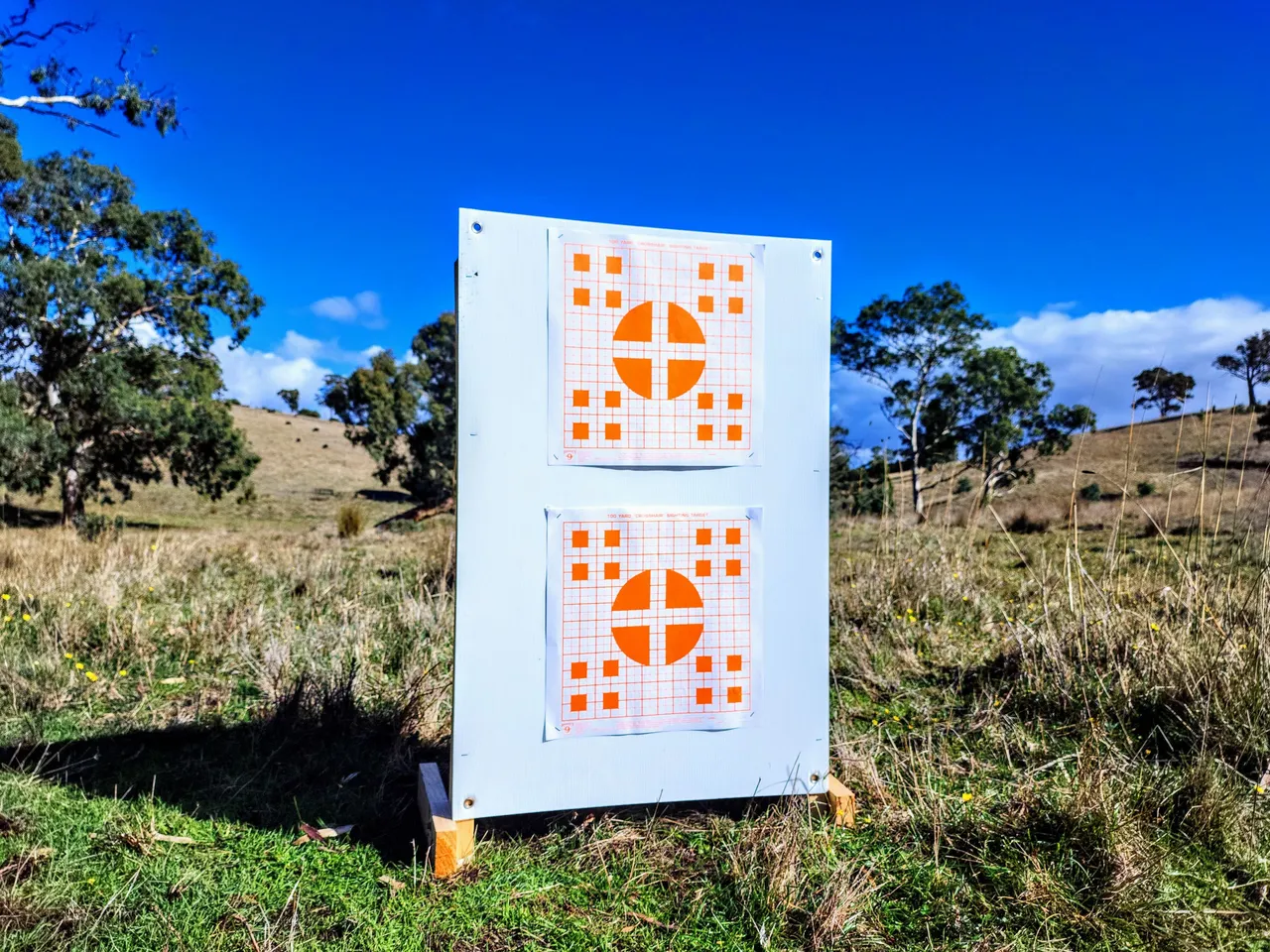
Sighting in and finding zero
Inside a rifle scope is a cross hairs, called a reticle. Below is what the reticle in the rifle I will talk about in this post looks like. All of the black markings within the white circle are the actual reticle markings, the rest isn't seen when looking through rifle scope.
The shooter aims the rifle using various markings on the scope dependent on many things, and not always in the very centre of the cross hairs, but for the purpose of this post I'm only going to talk about the centre point of the cross hairs represented by the red dot in the centre of the reticle below.
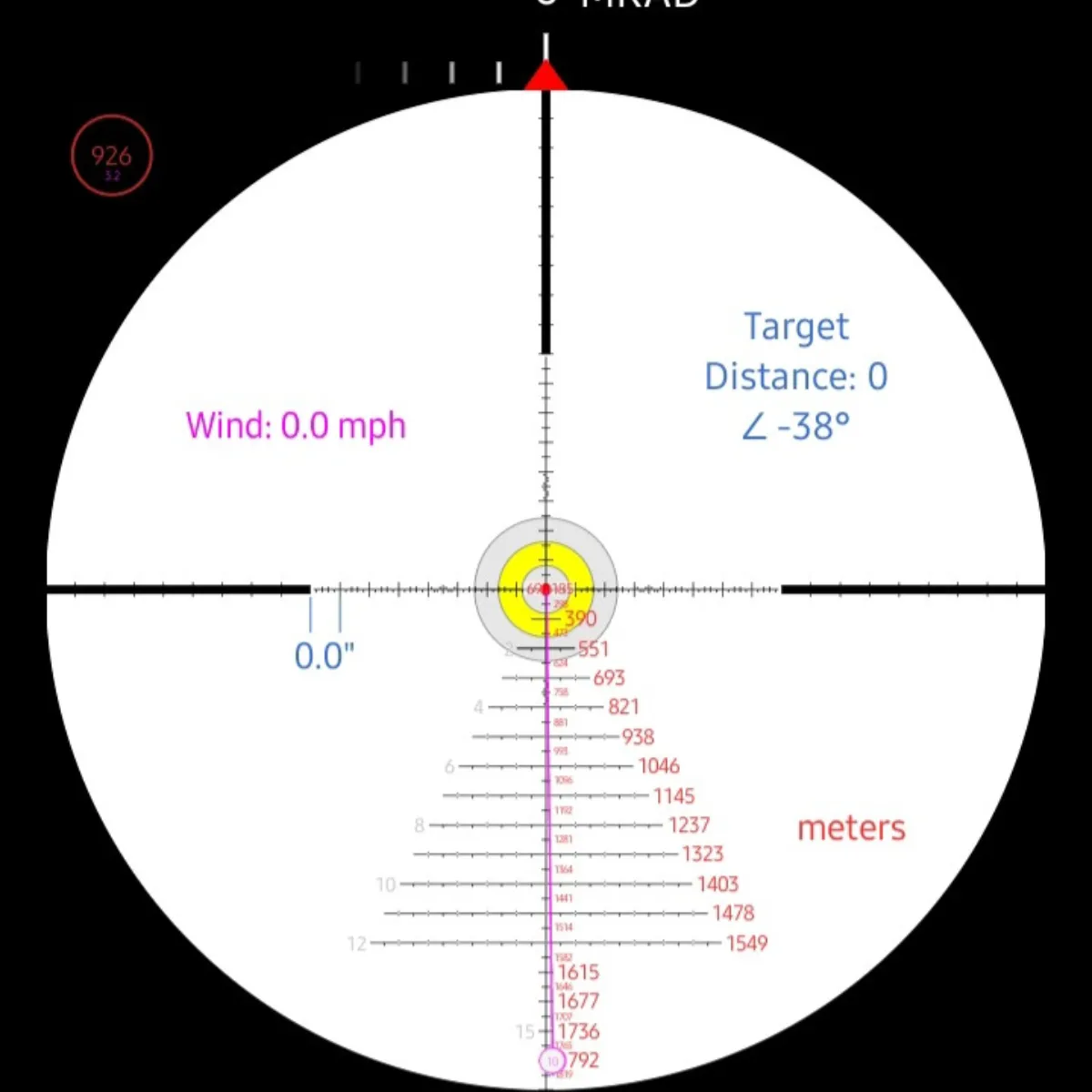
A rifle scope needs to be sighted in to a zero point to make it work properly.
This means that at a given distance (usually 100 metres) it needs to shoot at dead centre of the cross hairs. Depending on the rifle and it's uses it may be sighted in at 200 metres or more but that's more advanced stuff and not relevant now; It is critical to know what distance a rifle has been sighted in at though and once this has been done, the rifle/scope system is considered zeroed.

Shooter one - fixed scope (no elevation or windage adjustment for targeting
So, now the system is zeroed the shooter can place the centre of the cross hairs on a target at 100 metres away and, failing other issues, knows the round will impact at that point exactly, the point of aim (POI). At 200 metres some elevation will be required so the shooter will aim high and aim at some other point of the reticle, hence the other markings on it. Let's ignore the fact that there's so many other elements involved, just focus on the basics ok?
Basically, if the shooter needs to add elevation to make the shot he or she adds it by aiming higher.
Shooter two - adjustable scope (has elevation and windage adjustment)
A scope with adjustable turrets for windage (left and right) and elevation (up and down) has the ability to move the cross hairs to suit the target range and so can shoot at the centre of the cross hairs even at distances past 100 metres, the range at which the rifle/scope system is zeroed. This process is called dialling or dialling in as one moves the turret adjusters which sort of looks like a dial. (See above.)
An example.
A rifle zeroed at 100 metres with an elevation and windage adjustment.
- 100m: 0.0MRAD elevation dial
- 200m: 0.3MRAD elevation dial
- 250m: 0.6MRAD elevation dial
- 300m: 0.9MRAD elevation dial
(For an understanding of MRAD see one of my other posts here.)
In the above situation, the shooter can dial in the elevation (move the cross hairs) and continue to place the centre of the reticle onto the target knowing the elevation dial has accounted for the additional elevation required to impact the target at that given point. *Moving the cross hairs down forces the shooter to raise the rifle muzzle (point of aim) upwards to get it onto the target, just as shooter one did. The difference is that shooter two will still be able to shoot at the centre of the cross hairs/reticle. The more he dials in the higher he will have to point the muzzle to impact the target. This is demonstrated in the dot points above.
Shooter one does exactly the same thing, but has to aim at a point lower on the reticle because he cannot move it within the scope whereas shooter two just dials in the adjustment and shoots at the centre point of the reticle. This is demonstrated below. See how the red dot is now lower than the centre point of the reticle?
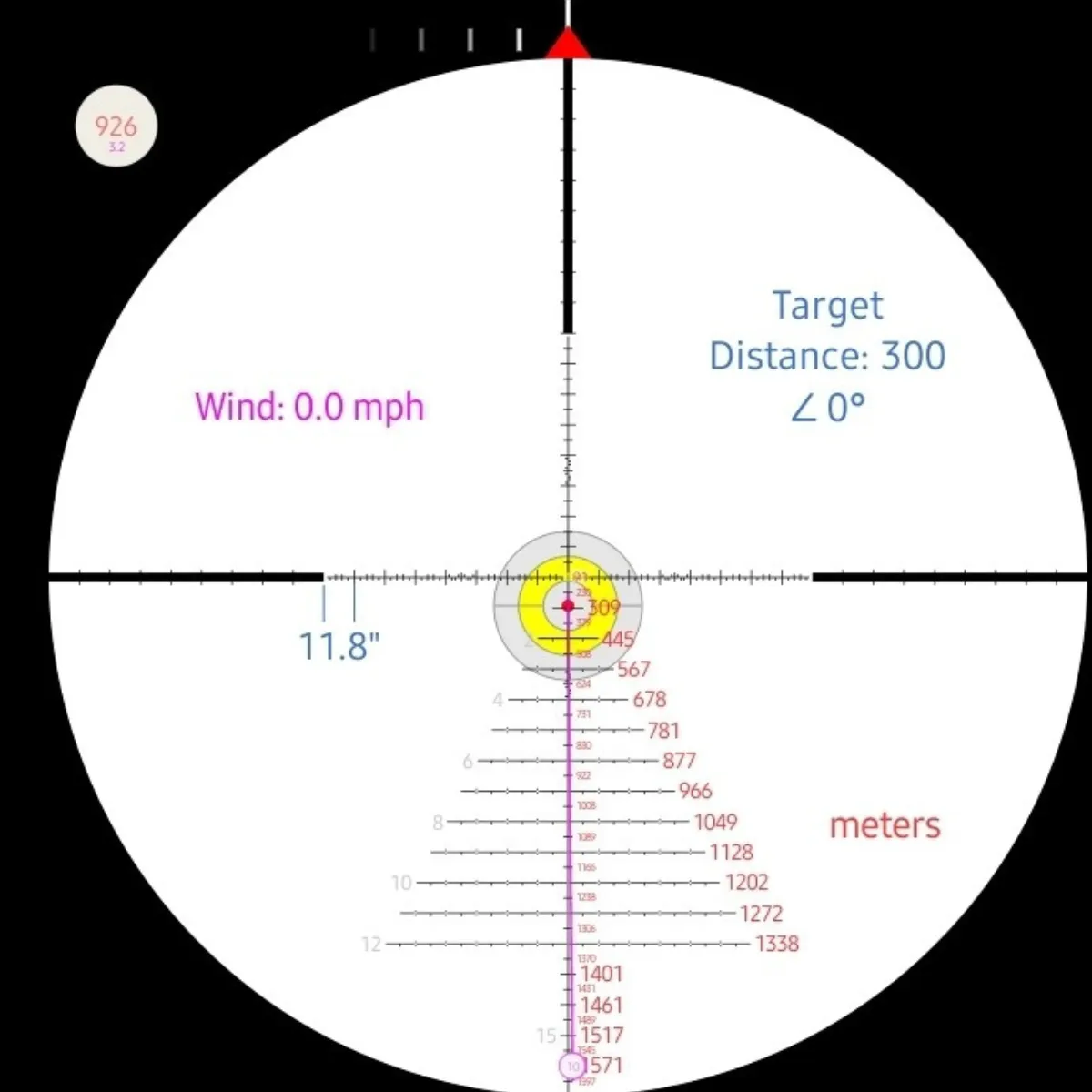
In the image above, you can see where shooter one would need to aim if making a shot at 300m, the red dot which is below the centre point. Shooter two would/could just dial in that elevation and still shoot at the centre of the cross hairs. Of course, shooter two could also just hold over, meaning shoot at the 0.9MRAD point below centre as shooter one would. This is usually done when transitioning from target to target quickly and eliminates the need to dial the elevation - it's a time saver. That is usually only done for closer range targets though, for long range targets shooters dial in the elevation and often the windage.
This is all quite complicated stuff really, I'm completely skipping many of the elements and the science behind shooting and long range shooting, but you should get an idea of the importance of having a good zero on a riflescope system. If it doesn't shoot right at 100 metres, it's only going to get worse the greater the distance the bullet travels and that means shots will miss.
Zeroing
It's quite simple really, one sets up a target page at 100 metres (as you see above) and shoots at it to check zero. If it is not at zero adjustments are made with elevation and d=windage turrets until impact lands at the exact point of aim, the centre of the reticle.
Ideally the bullets will land hole-in-hole at the point of aim. The turret caps are then loosened off and moved around to make those new settings the zero point then tightened up. The rifle is ready to go. Of course, like most things to do with firearms, it's not actually that simple, however that's essentially the process.
I have a special ruler (shooters rule) that measures in MRAD (Milliradians) and MOA (minute of angle), and has a lot of other useful things marked out on it also, and that's how I determine how well my rifles are shooting.
I expect my long range rifles to be 0.25MOA shooters at 100 metres which translates to all of the rounds bing in the space of about 7 millimetres. This is determined after taking three shots and measuring the area on the target they take up using the ruler. Shooting three rounds into a 7 millimetre area means the shots are impacting the spot where the first round went. It's called hole-in-hole or shooting a clover leaf, referring to the three-leaf clover shape the holes make.
I made up this crude diagram to visually demonstrate the concept of hole-in-hole shooting because I don't have a picture of the target I sighted the rifle on. Hole-in-hole doesn't mean the second and third round need to go perfectly into the hole left by the first, although that's the ideal of course.
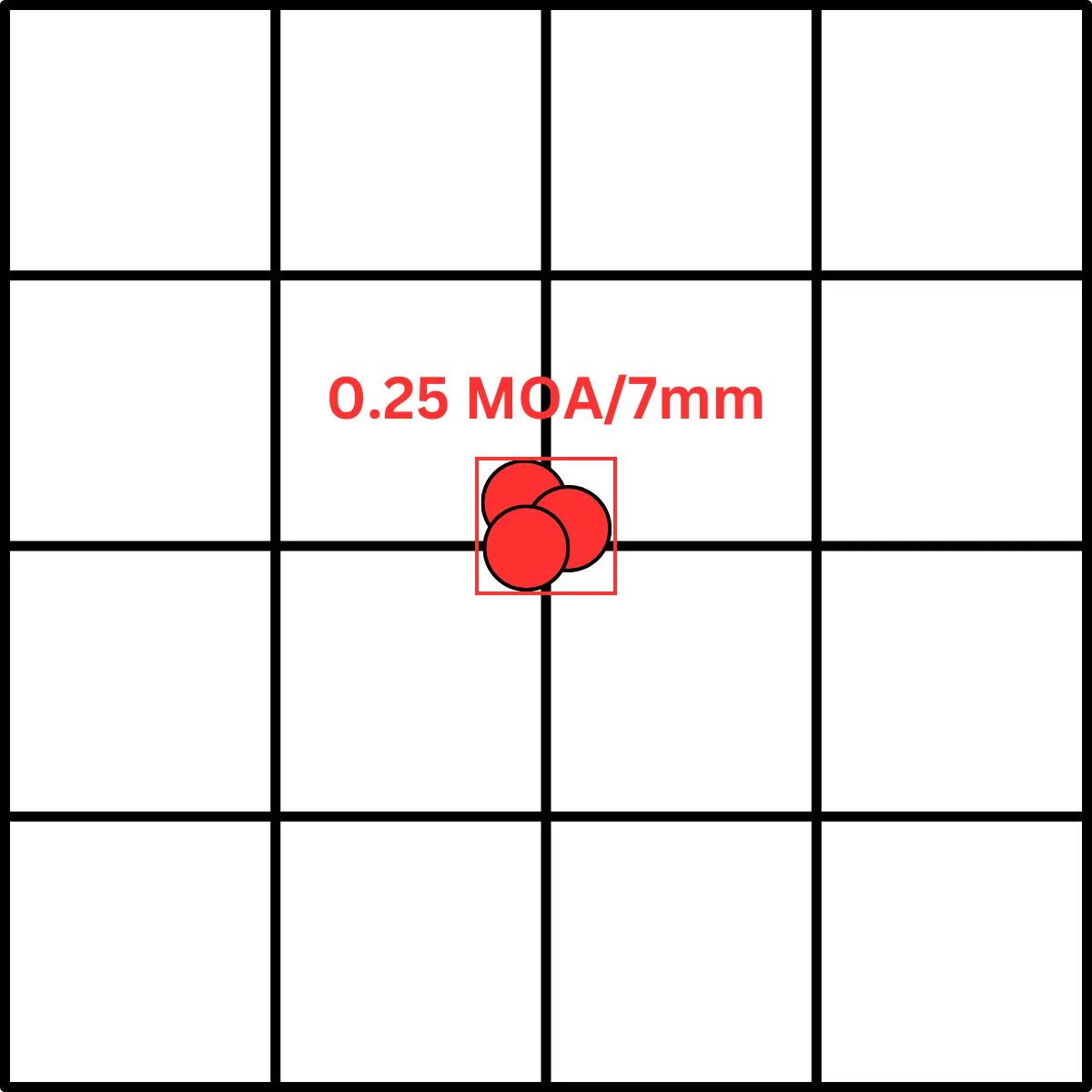
Not all rifles are capable of this, in fact most are not, and neither are most shooters I suppose. A standard hunting rifle, say a Tikka T3, boasts a guarantee of having a one MOA accuracy at 100 metres out of the box...it's not good enough to be a long range rifle, but great for hunting. (1.0 MOA is about a 29 millimetre diameter group at 100m as opposed to the 7 millimetre group which is 0.25MOA as stated above.)
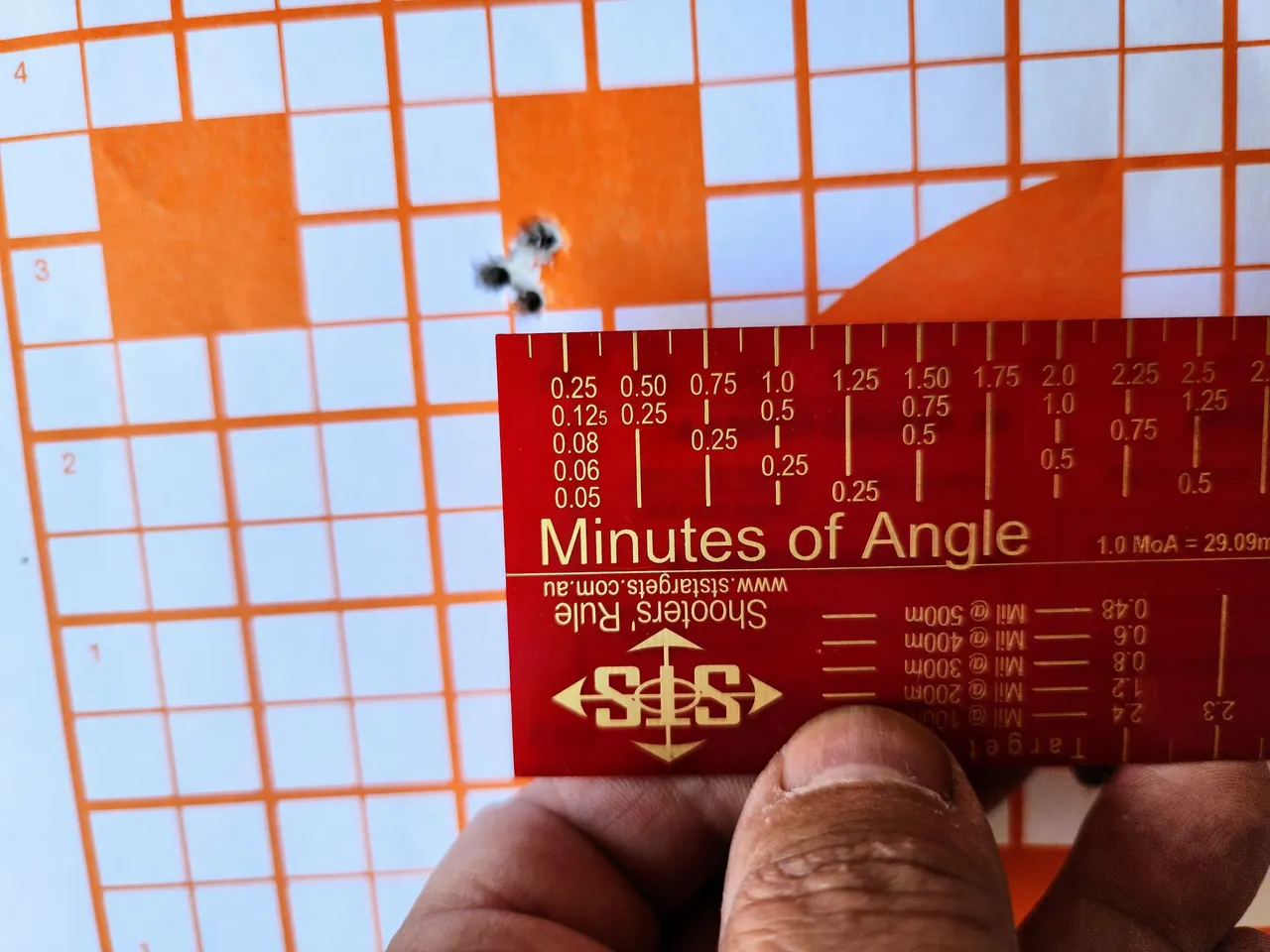
Having a rifle zeroed correctly is critical to the operator being able to hit something, especially at greater distances, and I've always maintained a very high standard for my rifles. Like this one, they lose their zero at times, generally through being knocked, and so they need to be verified using the process above.
There is so many technical and scientific elements to shooting and I've purposely left them out of this post otherwise it would have been a million words. If you have any questions feel free to ask, I'm only too happy to explain things in greater detail however some of the concepts are simply too complicated to explain in a comment, or even a post.
Design and create your ideal life, don't live it by default; tomorrow isn't promised so be humble and kind - galenkp
[All original and proudly AI free.]
Every image in this post was taken by me or created by me.